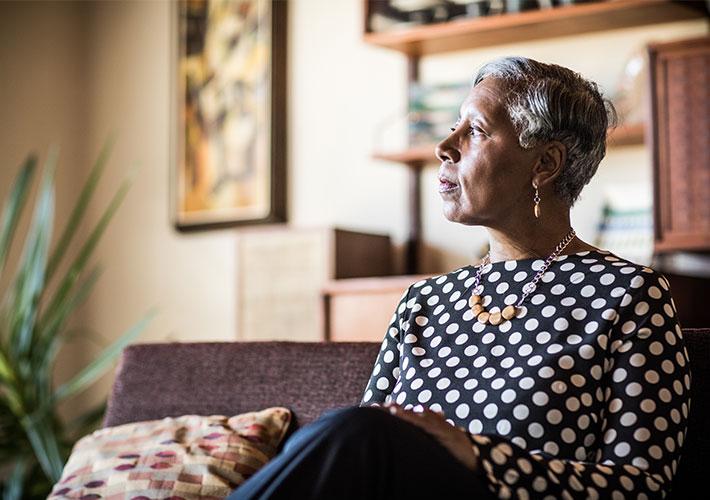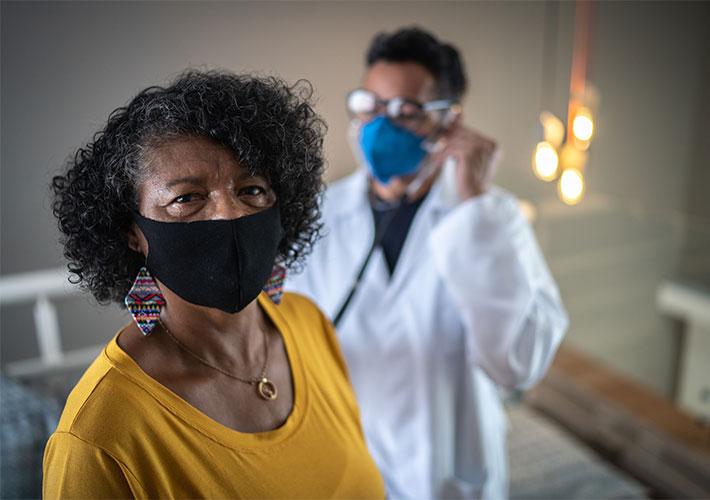Women Aren't Cared For Like Men - and It's Killing Them
Beyond Intervention: Poor access, diagnosis and treatment of women's vascular health are having disastrous effects.
What happens when the medical caretakers are ill-equipped to care for your personal caretakers?
The answer — so far — for the cardiovascular care of women and people of color has not been encouraging. Conscious or unconscious gender, racial and ethnic biases are adversely impacting their health on the whole. And the costs are staggering.
The recently-published white paper and supplemental information from "Beyond Intervention: Patient Experience And Health Equity" survey of 1,289 people suffering from vascular diseases across 13 countries — along with 408 physicians and 173 healthcare leaders — found:
- Women with Coronary Artery Disease (CAD) and/or with Peripheral Artery Disease (PAD) reported more challenging experiences compared to their male counterparts in relation to access to healthcare, emotional factors surrounding healthcare interactions and relationships with their physician.
- Women and non-white patients are less likely to be recommended for and receive cardiac catheterization compared with white male patients, despite sex and ethnicity-agnostic clinical guidelines,1 with poorer clinical outcomes and patient experiences compared with their male counterparts. How poor? Overall mortality rate during hospitalization for myocardial infarction — heart attack — was 16.7% among women and 11.5% among men. When looking at patients under 50, the mortality rate for women was two times that of men.2
- For women, those outcomes impact more than the patient alone in terms of the economic burden placed on healthcare systems and the workplace due to repeat hospitalizations and missed workdays.3,4
Additional Emotional and Economic Costs
Because women can present symptoms differently from men5 — which can contribute to vascular conditions being underdiagnosed and undertreated — more than half of women mention difficulty finding a doctor that takes them seriously, leading to a lack of trust, access and understanding for women and people of color.
Fallout from the emotional toll is exacerbated by economic burdens.
- In a single year, the incremental total medical costs per U.S. person with angina/chest pain were $14,796, with incremental cardiovascular-specific costs of $10,949.20. Additionally estimated annual costs due to absenteeism and presenteeism totaled per-person of $13,977.
- When this economic impact is applied across the estimated 1.5 million people with ischemia and no obstructive coronary artery disease (INOCA) among the U.S. workforce, the total estimated annual cost of lost productivity could be as high as $21 billion per year.4 With INOCA present in 50-70% of women,3 these costs can reach $10.5-$14.7 billion for women alone.
"Inherent biases can hinder a physician’s ability to detect and recognize symptoms, especially for populations that have been historically misdiagnosed in the cardiovascular disease setting, such as young, female and certain ethnicities," said Dr. Natalia Pinilla, Interventional Cardiologist at Hamilton Health Sciences/Niagara Health and Assistant Professor in the McMaster University Department of Medicine.
It's an emotional and economic toll that cannot be allowed to fester. At Abbott, we have a mission to restore dignity to healthcare through medical technology that’s affordable and accessible to help billions more by 2030. We understand that complex problems require multifaceted solutions to close these gaps in care for women and people of color.
Three Places to Start
- Enrolling more representative samples in clinical data studies, starting with more inclusive trial designs. Women account for only 38% of participants in cardiovascular clinical trials6 despite being half the U.S. population.7 For Black women, the numbers are even starker: 2.9% of participants in clinical pharmaceutical drug trials between 2006 and 2020,8 despite representing about 14% of the U.S. population,9 and whose age-adjusted rate of heart disease is 72% higher than for white women.10
- Leveraging comprehensive and inclusive data sets for training artificial intelligence (AI) algorithms, which are set to inform future diagnostic and therapy decisions for patients. "There are any number of ways that AI-based algorithms can, at their core, have bias," said Dr. David G. Armstrong, Professor of Surgery and Director of the Limb Preservation Program for the Keck School of Medicine at the University of Southern California. "We're trying to develop broad-based algorithms to allow deep learning instead of just being superficial and focusing on just one skin color. And we’re starting to see the results."
- Increasing investments in women’s health, incorporating the spectrum of clinical trials grant funding and ranging to Female Technology (FemTech) solutions that can help with disease management. As the number of women at the forefront of digital research continues to grow, it's important to recognize that FemTech is not a "side project." Women who feel they have been failed by clinicians are taking control of their own conditions and treatment options. "Female investors tend to better understand challenges in women's health space because chances are they have experienced them, too," said Marija Butkovic, LLM, Founder/CEO of Women of Wearables. "Diversifying their teams internally, as well as portfolios, institutional investors have the opportunity to not only democratize access to better healthcare for all but also to change the narrative around what good accessible healthcare means and technology is a big part of that."
Total Solution: Conscious Inclusion
To reduce the gender and race gaps with the help of digital health tools and screening technologies as well as computer-aided review of data, those tools would be most effective if they are truly programmed with diverse data sets that are representative of all populations,11 requiring examination of personal biases in clinical and economic decision-making.
"The first step is to recognize physician and cultural bias in cardiovascular care and its socioeconomic and clinical impacts." said Dr. Nick West, Chief Medical Officer and Divisional Vice President of Medical Affairs, Abbott’s Vascular Business. "Only then can we begin to outline the necessary steps that must be taken to address the systemic issues underpinning underrepresentation, health inequity and ethnic/sex bias that are currently affecting patients suffering from vascular disease."
And that's the answer we all want to get to.
References
1Lawton, et al., "2021 ACC/AHA/SCAI Guideline for Coronary Artery Revascularization: A Report of the American College of Cardiology/American Heart Association Joint Committee on Clinical Practice Guidelines," Circulation. 2021; 144:00-00.
2Vaccarino, et al. "Sex-Based Differences in Early Mortality after Myocardial Infarction," The New England Journal of Medicine, July 22, 1991.
3Kunadian V, Chieffo A, Camici PG, et al. An EAPCI Expert Consensus Document on Ischaemic with Non-Obstructive Coronary Arteries in Collaboration with European Society of Cardiology Working Group on Coronary Pathophysiology & Microcirculation Endorsed by Coronary Vasomotor Disorders International Study Group. European Heart Journal. 2020; 0:1-21.
4Schumann CL, Mathew RC, Dean J-HL et al. Functional and economic impact of INOCA and influence of coronary microvascular dysfunction. JACC Cardiovascular Imaging 2021; 14: 1369-79.
5Mehta et al., "Gender in cardiovascular medicine: chest pain and coronary artery disease," European Heart Journal (2019) 40, 3819-3826.
6Ibid.
7"Population, Female (% of Total Population) – United States," The World Bank, 2020.
8Siliang Chen, M.D., and Jiarui Li, M.D., "Participation of Black US Residents in Clinical Trials of 24 Cardiovascular Drugs Granted FDA Approval, 2006-2020," JAMA Network, March 23, 2021.
9Tamir, et al., "Facts About the US Black Population," Pew Research Center, March 25, 2021.
10"Women and Heart Disease Facts," Women's Heart Association.
11John League, "5 Questions about the Reality of Artificial Intelligence in Health Care," January 18, 2022.





